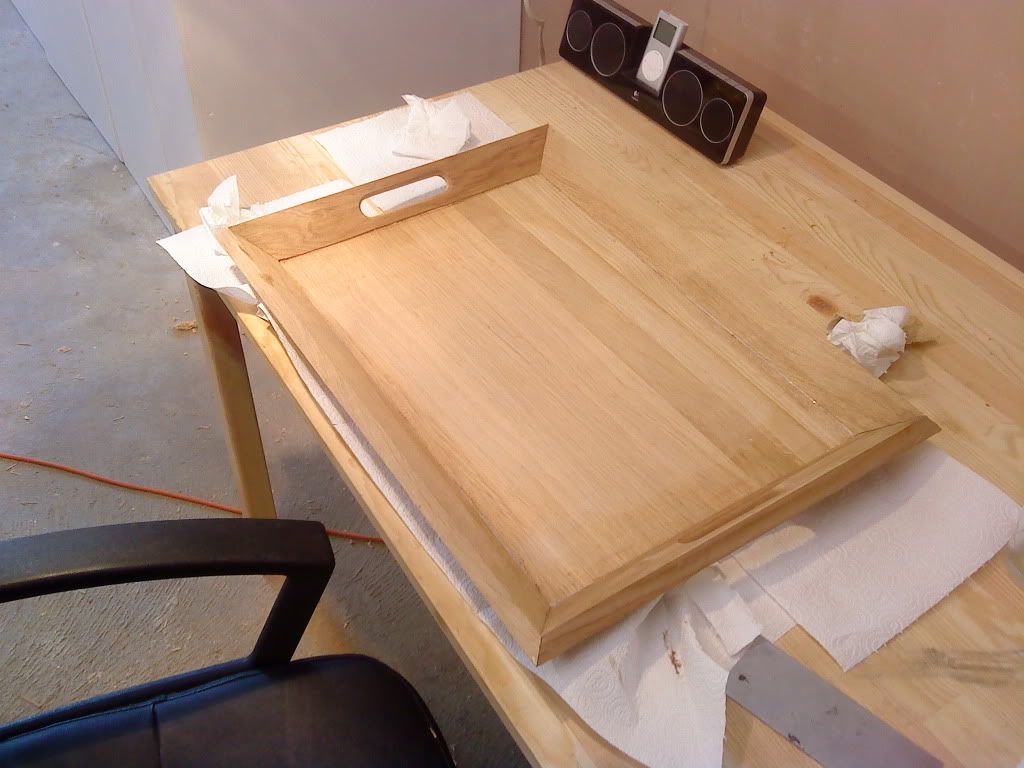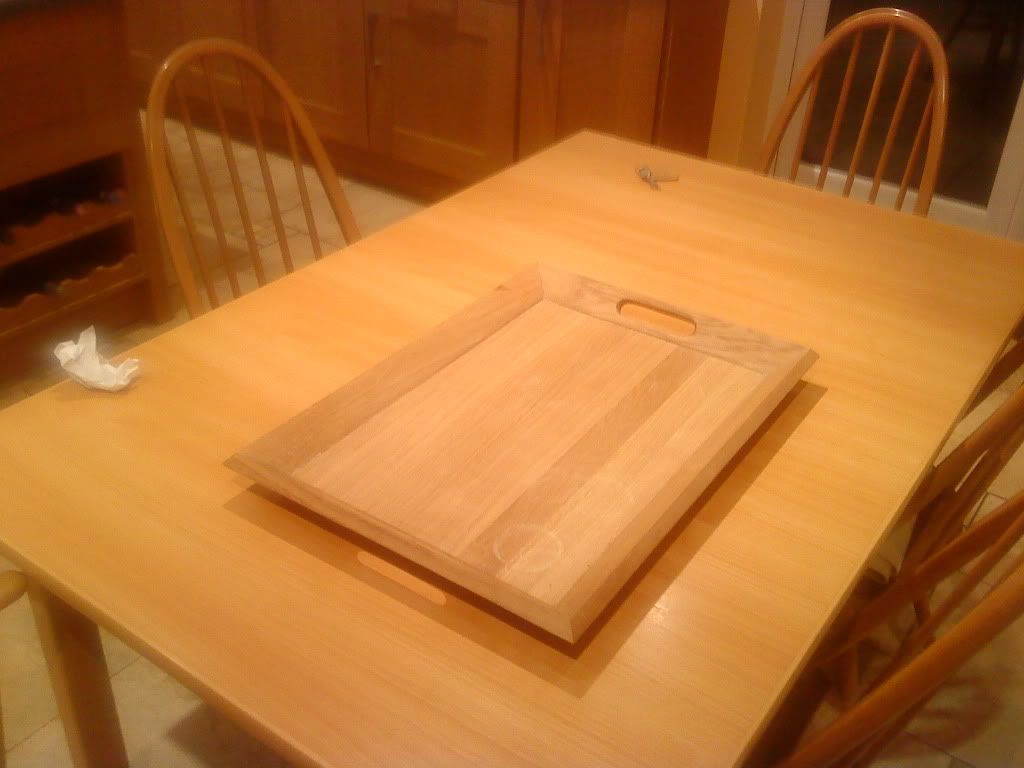Chems
Established Member
Here it is:
(Looks in the picture like there is a gap in the base, there isn't its just the shadow!)

I used a brilliant clamping method in the end, I used a 2 part 90 second epoxy coupled with my hands. Worked great. Its all dirty at the mo with squeeze out so will clean that up in the morning and give it a few coats of melamine lacquer to give it some heat resistance.
(Looks in the picture like there is a gap in the base, there isn't its just the shadow!)

I used a brilliant clamping method in the end, I used a 2 part 90 second epoxy coupled with my hands. Worked great. Its all dirty at the mo with squeeze out so will clean that up in the morning and give it a few coats of melamine lacquer to give it some heat resistance.


































